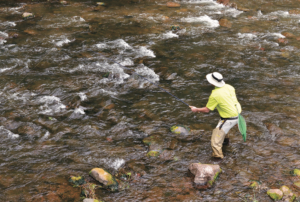Source: Arizona Game and Fish Department E-Blast – September 28, 2019
According to the 2016 National Survey of Fishing, Hunting and Wildlife-Associated Recreation, 103 million Americans — an astonishing 40 percent of the U.S. population 16 years and older — participated in fishing, hunting or other wildlife-related recreation such as birdwatching or outdoor photography.
In doing so, those participants kept cash registers humming to the tune of $156.9 billion spent on equipment, travel, licenses and fees. That figure represents almost 1 percent of the Gross Domestic Product, creating and supporting thousands of jobs and communities across the nation.
equipment, travel, licenses and fees. That figure represents almost 1 percent of the Gross Domestic Product, creating and supporting thousands of jobs and communities across the nation.
Gov. Doug Ducey recently signed a proclamation celebrating National Hunting and Fishing Day on Saturday, as well as recognizing the role that Arizona’s hunting and angling community plays as an economic driver. In 2018, almost $60 million was generated through the American System of Conservation Funding to support the conservation efforts of the Arizona Game and Fish Department. The system is a “user pays-public benefits” approach that is widely recognized as the most successful model of fish and wildlife management in the world.
Whatever a person’s interest in wildlife, hunters and anglers — the original conservationists — have made countless contributions over the decades to the conservation of fish and wildlife through sound, science-based management. Even if a person doesn’t actively participate in the time-honored traditions of hunting or angling, it’s important to understand how those outdoor pursuits benefit wildlife.
Since 1939, hunters and anglers have generated more than $20 billion toward wildlife restoration through an excise tax imposed on the sale of hunting, angling and shooting-sports equipment. Those funds are administered by the federal Wildlife and Sport Fish Restoration (WSFR) program, one of the most significant programs benefiting wildlife conservation and outdoor recreation.
WSFR funds, along with the sale of hunting and fishing licenses, provide a substantial portion of wildlife conservation funding for activities such as fish and wildlife population management, habitat management, research, surveys, land acquisition, hunter education, shooting and archery ranges, boating access, and more.
The general public gets better stewardship of natural resources. Hunters and anglers get more and better places to hunt and fish. State and federal agencies receive more funds to meet their conservation needs.
“Hunting and fishing are fun, family activities, and many in today’s society haven’t been exposed to them,” said Doug Burt, hunting and shooting sports program manager for the Arizona Game and Fish Department. “National Hunting and Fishing Day is a way to reach out to those interested and let them know there are many outlets for them to get started.”
To learn more, visit www.azgfd.gov.
